
| Home » Region » Greenland | |||
Greenland
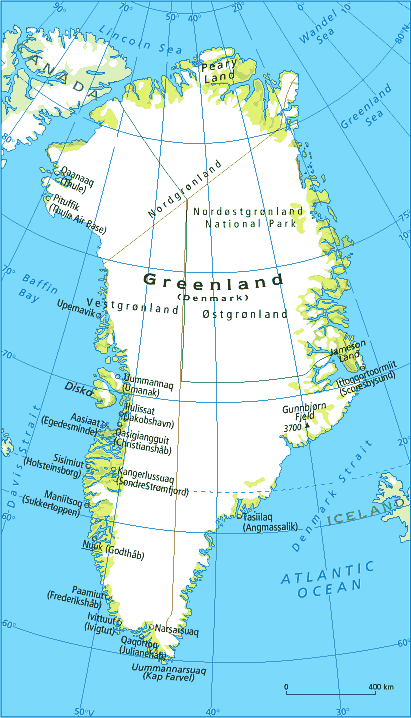 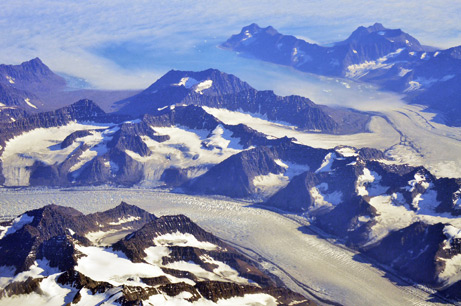 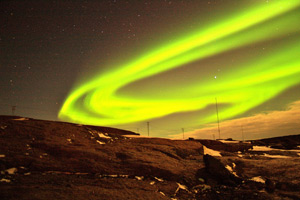 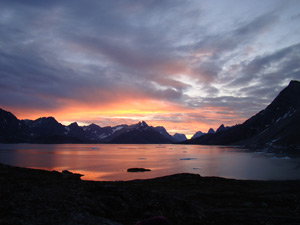 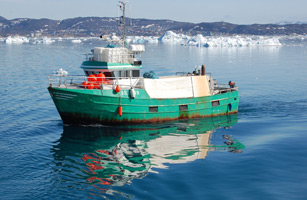 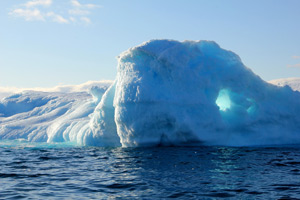 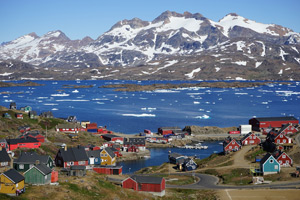 GeographyGreenland is the largest island in the world. Its northerly location, at the point where the Atlantic meets the Arctic Ocean, means that Greenland is surrounded principally by cold ocean currents, so the coasts are constantly being cooled. This, combined with the radiation of cold from the inland ice, gives Greenland its arctic climate. The ice cap or inland ice covers 1,833,900 square km, equivalent to 85 percent of Greenland's total area, and extends 2,500 km (1,553 miles) from north to south and up to 1,000 km from east to west. At its center, the ice can be up to 3 km thick, representing 10 percent of the world's total fresh water reserves. If all the ice were to melt, the world's oceans would rise seven meters. ClimateGreenland is often associated with cold and darkness and it can, of course, get very cold. However, there is also plenty of light and, although the polar darkness often reigns (in Qaanaaq, the sun doesn't rise for a whole three months!), it is never totally dark. Greenland enjoys more hours of summer than anywhere down south, but the weather is nowhere near as warm, even though the light is much more intense. Greenland summers won't give you an all-over tan, but your face and neck will turn a beautiful shade of brown. The climate of Greenland is generally dry, and this means that the same temperature feels very different in Greenland from what it does in Europe. 10 - 15 C (50 - 60F) seems very warm, while -10C (-50F) seems a very pleasant temperature. PeoplePeople have lived on Greenland for about 5, 000 years, the earliest belonging to what are called the Independence I , Saqqaq, and Independence II cultures. They migrated from North America, used stone tools, and were the first to successfully adapt to the island's severe conditions. Following the Independence II migration, a people known as the Dorset arrived, and it is from them that the oldest myths and legends of Greenland's modern day Inuit people are derived. The Thule, who are closely related to the Inuit, arrived in about 900 AD, just before the first Norsemen began settling on the eastern and southern coasts. Today, 80 percent of the island's people are Inuit; the rest are Danish. Recent HistoryBacked by the Danish King, Hans Egede, a Norwegian priest, organized a successful expedition to Greenland in 1721. This expedition began the colonial age, which lasted until the constitutional amendment of 1953. Since then, Greenland has had a home-rule government under normal Danish rule, and (like the Faroe Islands) Greenland also became entitled to send two representatives to the Folketing, or Danish Parliament. As Danish citizens, the Greenlandic people now had ordinary civic right and their general state of health and educational facilities was radically improved. Flora And FaunaThe richest plant growth is found in the sub-arctic belt, which includes only the very southernmost part of Greenland and the inner fjords. The greater part of Greenland, however, has diverse mountain vegetation, reminiscent of northern Scandinavia. In the driest inland areas, the vegetation is similar to that found in the mountainous regions of central North America. Among the many different types of whale in the waters of Greenland are the fin whales, blue whales, humpbacks, narwhal, white whales, lesser rorquals, sperm whales and pilot whales. On a whale watching trip, it isn't unusual to see two different species, and meeting a humpback with a tail up to 5 meters wide is an experience to be remembered. Northern Lights And Midnight SunThe Northern Lights appear all year round, but they are most impressive in the autumn months. They can also be seen in March and they "disappear" in the light summer nights. The midnight sun is another magnificent Greenland phenomenon which is encountered north of the Arctic Circle. Daylight can be enjoyed round the clock, depending on how far north you are. For example, in Uummannaq, the midnight sun is present from the 16th of May to July 28th and during that time "normal" methods of working out what time it is are more or less useless. It is light around the clock. Traveling To GreenlandGreenland is reached by air from Copenhagen or Reykjavik. |












